Post Content
If you are just getting started in the wet shaving world, you probably have a lot of questions about safety razors including the inevitable question of which safety razor is the best for you.
Well, don’t worry as we have the definitive guide on the best safety razors for every budget and need as well.
There are several types of razors.
There are safety razors and super safety razors as well as old type razors like a straight razor with a guard.
But for now, in this article, I’m going to be talking about all of the different types of safety razors that are available and what separates them from one another.
But first, what is a Safety razor?
A safety razor is a shaving piece that protects the shaver from direct contact with the shaving blade while in use.
There are two main factors that differentiate safety razors from one another.
Those two factors are how they are constructed and the type of headpiece that they use.
Most Popular Products |
||
|---|---|---|
| "#1 Butterfly Safety Razor" | "Best Shaving Kit" | "Top After-Shave Balm" |
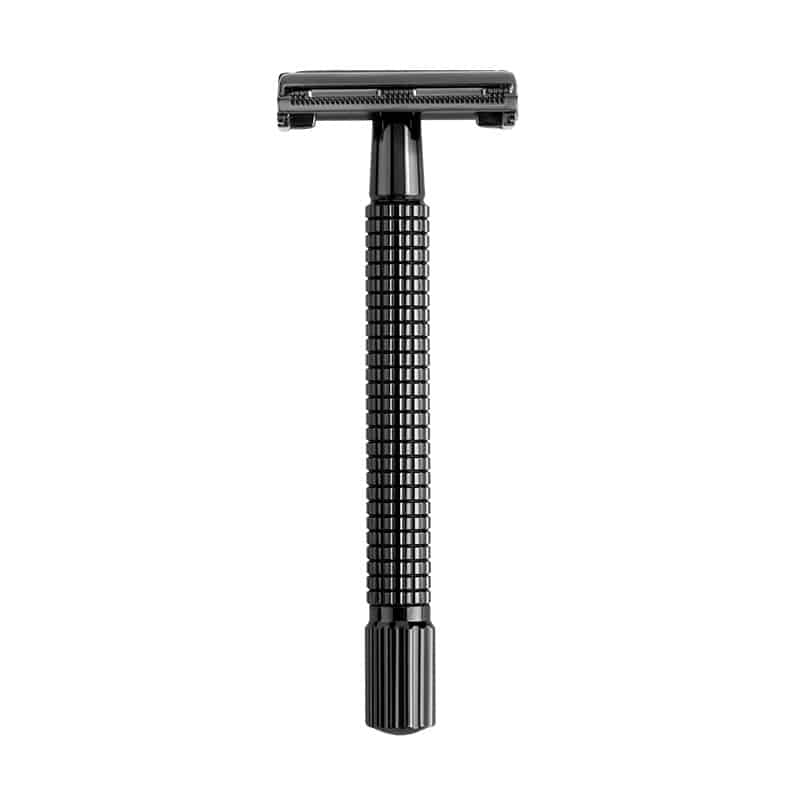 | 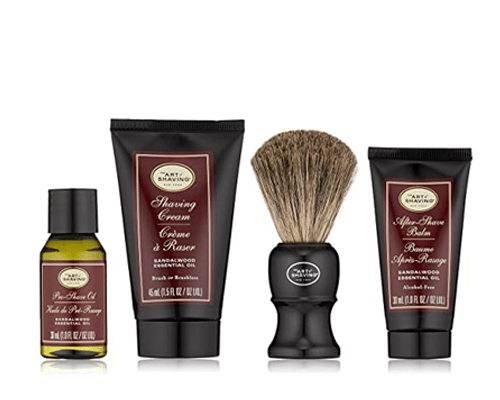 | 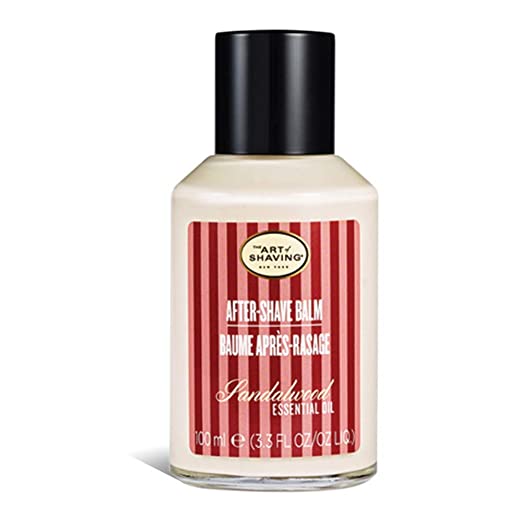 |
| View on Sigma | View on Amazon | View on Amazon |
Almost every single safety razor has a different weight, length of the shaving handle, grip, look and feel to them.
These are not factors I will be talking about in this article.
Let’s start talking about the different types of safety razors and how they will affect your shave.
Post Content
Types of Safety Razors: Differences In Construction
Whether you need a safety razor for shaving your head or beards, there are three general ways that different types of safety razors are constructed.
There are one-piece, two-piece, and three-piece men’s safety razor designs.
There is also open comb vs closed comb safety razors.
Let’s go over them now.
One-piece Design
One-piece designs have a mechanism inside them that allows the cutting head of the headpiece to open up from two hinges in order to replace the blade.
There are multiple names for this type of safety razor.
Common names of these types of safety razors are twisted to open, silo razors, or butterfly safety razors.
Typically there is a knob at the bottom of the handle that is used to open the headpiece.
Sometimes the whole handle itself rotates in order to open this mechanism.
Butterfly razors became popular due to the extreme ease of blade replacement.
Popular razors that are built on this twist to open design are the Gillette Adjustable and multiple Parker safety razors such as the Parker 99R.
One downfall of owning twist to open safety razors is that they are easier to break due to the typical wear and tear of the moving parts.
The inside of the shaving head on butterfly open safety razors is difficult to clean which leads to soap scum buildup.
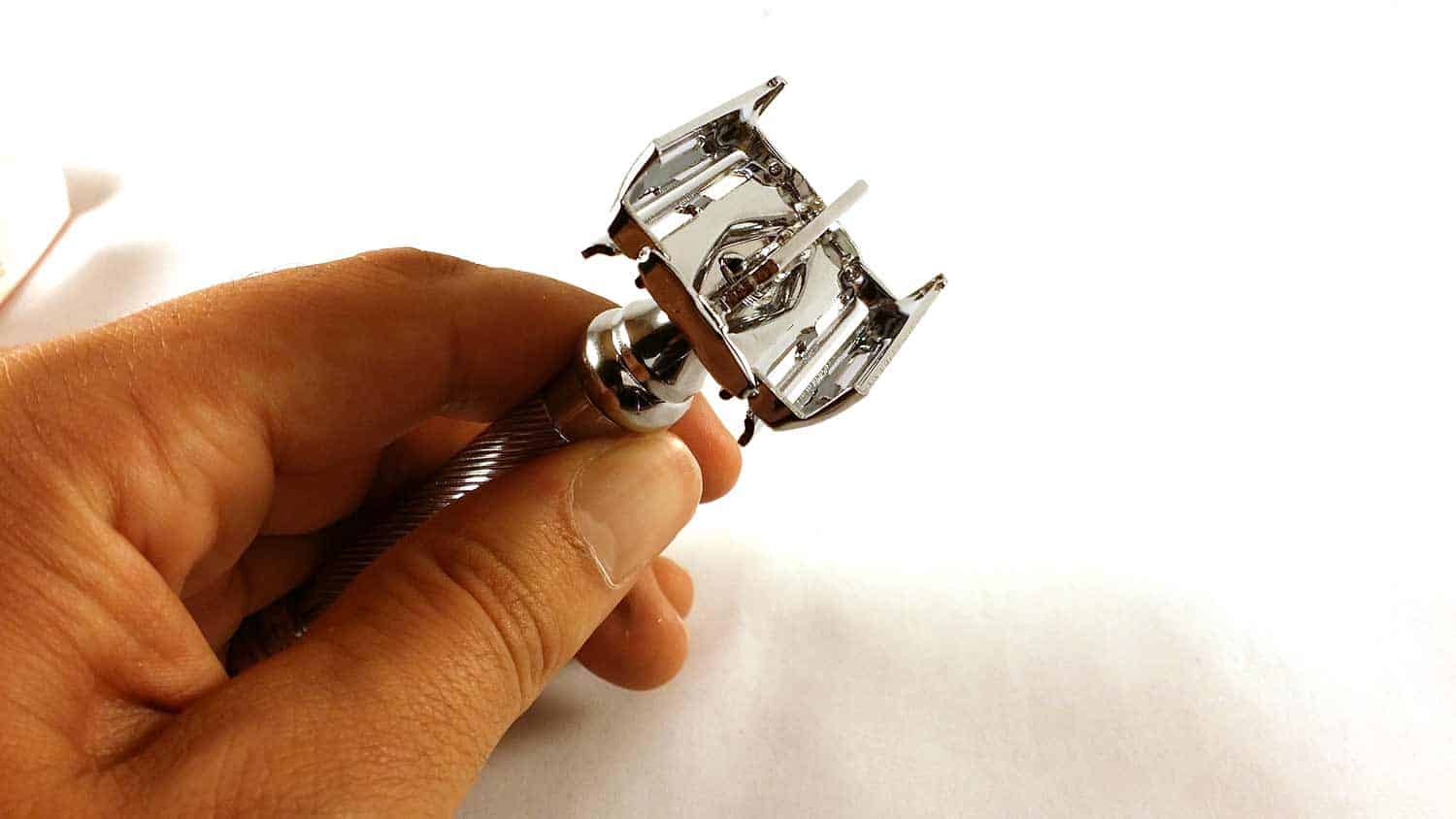
Two-piece Design
Two-piece are the other types of safety razors designed to have the cutting head unscrew from the rest of the razor in order to exchange old blades for new ones.
The cutting head has a long bar with a screw at the end that is inserted into the handle.
A knob at the bottom of the handle is used to screw the cutting head onto the rest of the razor.
This two-piece design is favored by many wet shavers because it is not necessary to handle the blade compared to a three-piece safety razor.
Blade replacement on the two-piece safety razor is harder than a butterfly open safety razor but easier than a three-piece.
Safety razor maintenance and cleaning are easier on the two-piece compared to a butterfly open safety razor, but more difficult than a three-piece safety razor due to the fact that the safety razor bar and lower headpiece are permanently attached to the handle.
Soap scum can go down the entire handle making it virtually impossible to clean inside thoroughly.
Although the two-piece design does not have as many moving parts as a twist to open the safety razor, there are still areas that can be worn down including the threads and knob at the bottom.
Be careful not to overtighten the headpiece as this is the most common cause of wear and tear.
Some popular two-piece safety razors include the Merkur 34c and 37C.
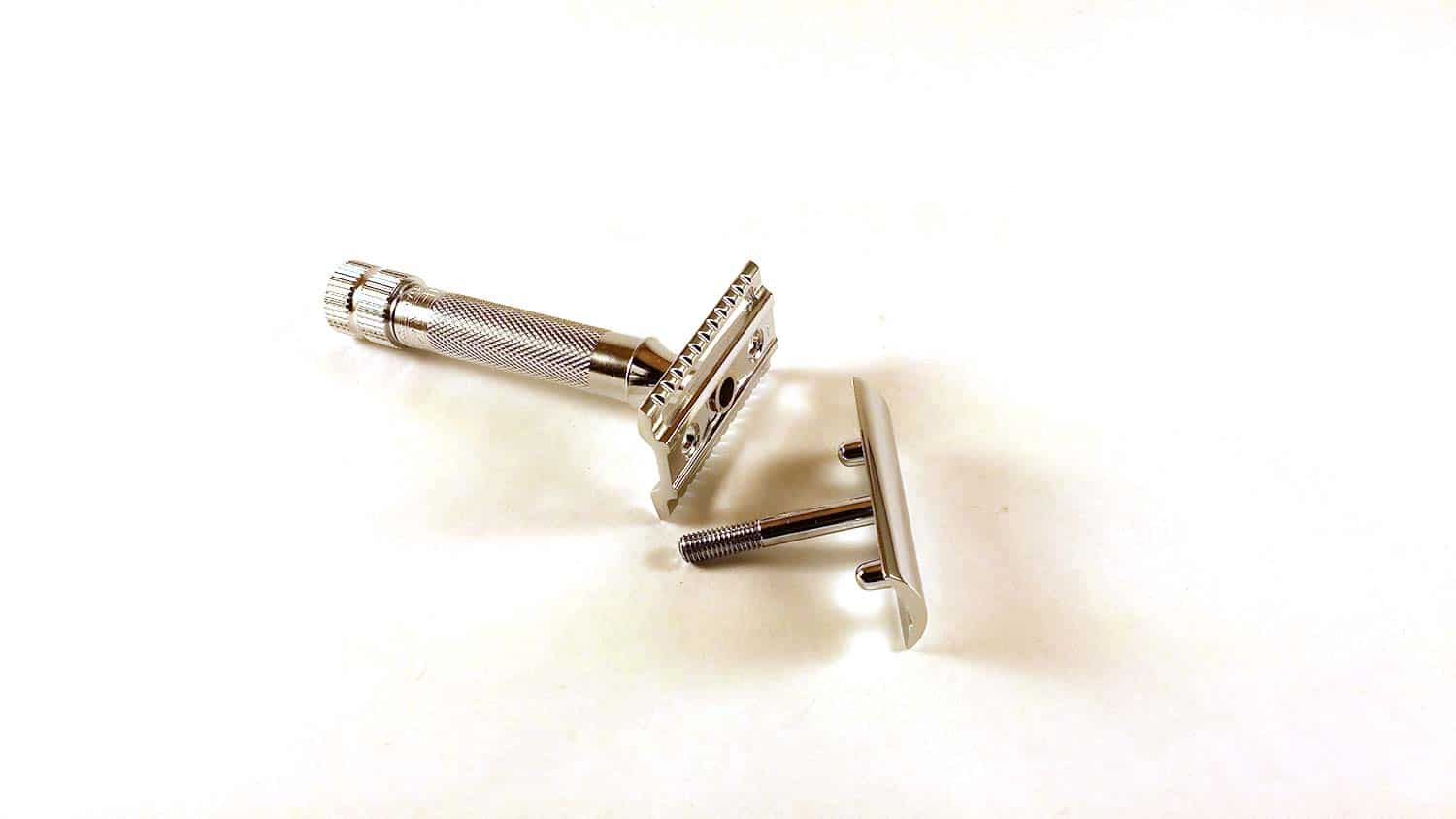
Three-piece Design
Three-piece safety razors are probably one of the most popular types of safety razors.
The earliest models date back to the early 1900s by Gillette.
These Gillette safety razor models are similar to the two-piece safety razor except the base head can also be removed from the handle.
The three pieces are the handle, the base of the head, and the top of the cutting head.
The reason three-piece safety razors are so popular is that they are so easy to clean and maintain.
Since there are no moving parts it is very easy to have these safety razors last a lifetime.
The only downfall is that blade replacement is more difficult than on a two-piece safety razor or a butterfly open safety razor.
You need to be very careful when replacing blades on a three-piece safety razor because you will have to handle the blade with your hands a lot more.
There are also more issues with blade alignment on three-piece safety razors compared to the other two types of safety razors.
This should not be of that much concern though because after you practice a few times, it will become an easy routine.
Some popular three-piece safety razors are the Edwin Jagger de89lbl and the Muhle R89.
Below is my Edwin Jagger DE89lbl three-piece safety razor.
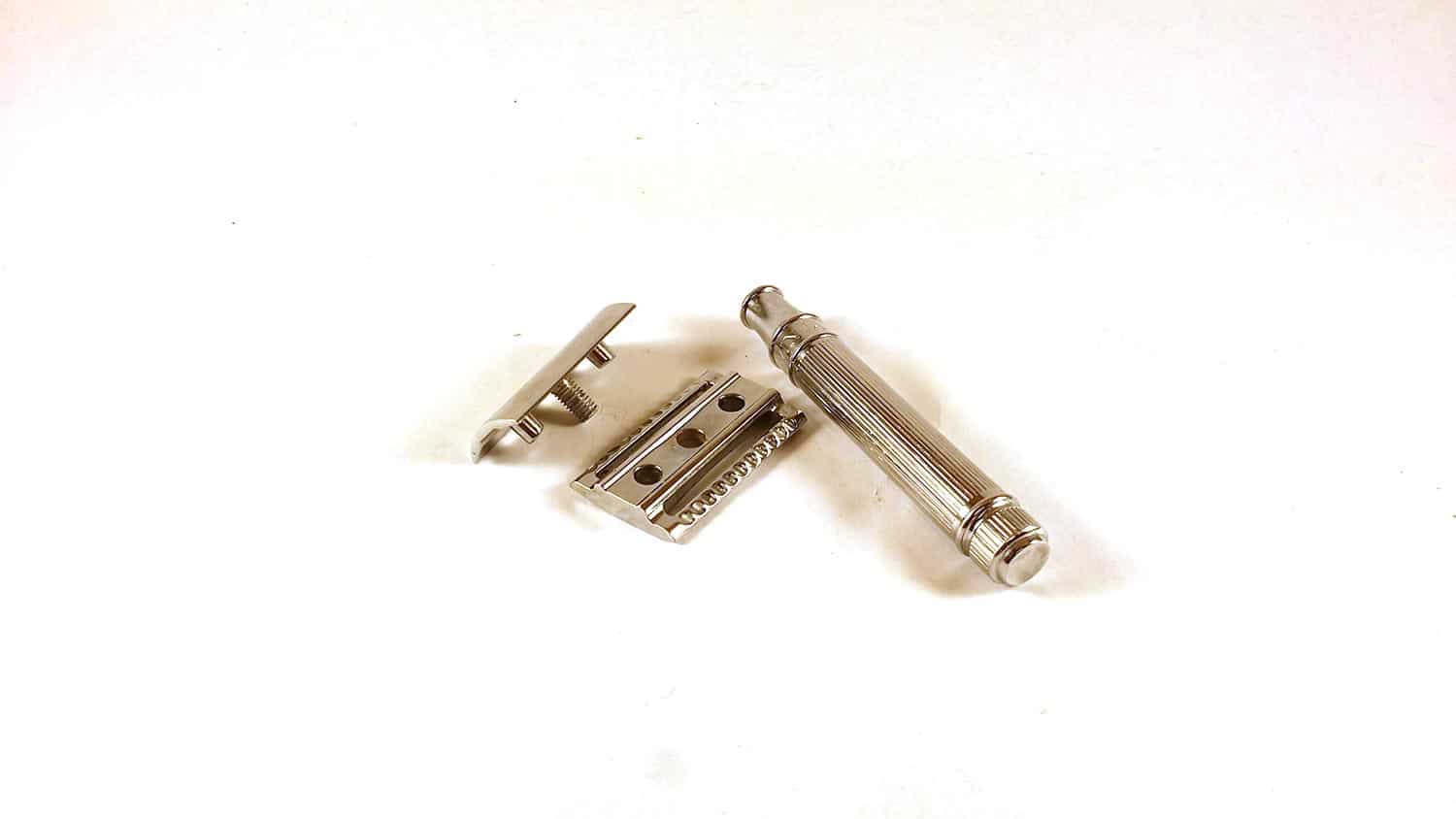
Types of Safety Razors: Differences in Headpieces
Besides the construction of the overall safety razor, the types of headpieces that are used can also have a big impact on your overall shaving experience.
The types of shaving heads I will be talking about are the straight bar, slant bar, open comb, and adjustable heads.
Let’s get right into it!
Straight Bar Design
This is the most common design for the safety razor.
Probably more than 90% of safety razors use this straight bar design.
This means is that the safety bar that is used to take away pressure from the blade is straight.
Some people call this design a closed comb.
Slant Bar Design
Slant bar designs are where the safety bar is tilted at a slight angle.
What this means is that the blade will slice the hairs at an angle instead of chopping them straight down.
Think about when you are cutting vegetables with your kitchen knife.
If you angle the blade slightly it is much easier to slice through rather than push the blade straight down on top of the vegetables.
This slant bar design is considered by many to be more aggressive(check out my article on what aggressiveness means).
This means that it can handle tougher beards with little effort.
This type of design requires a bit more practice to get used to compared to a straight bar design.
Some common safety razors that use a slant bar design are the Merkur 37c and 39c.
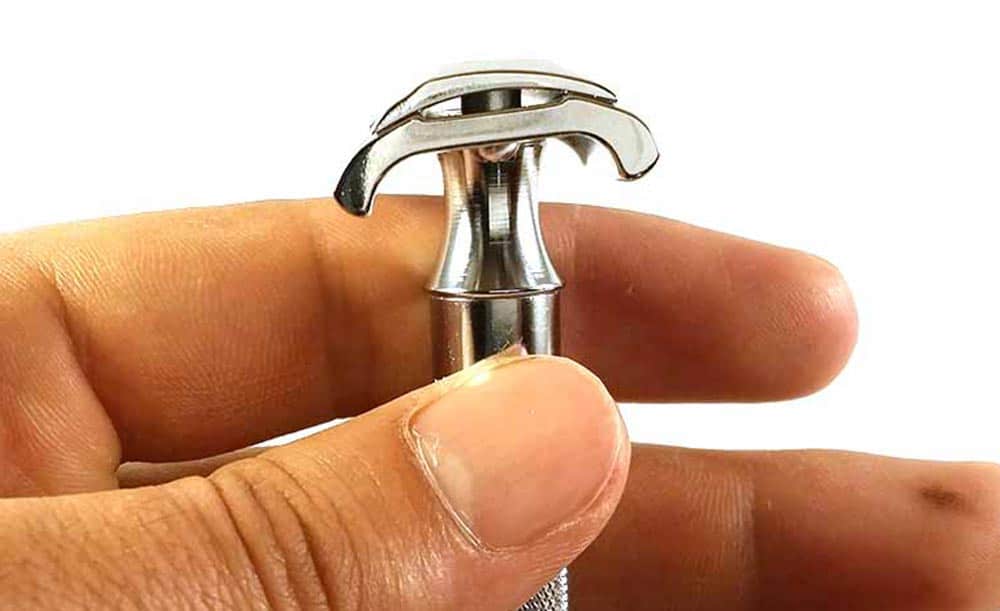
Open comb design
The open comb safety razor design has a safety bar with teeth like a comb does.
This means that there is space in between each groove of the comb.
This design is to apply more pressure to the edge of the blade compared to the usual straight bar design.
They are typically more aggressive and are used for thicker beards.
A popular open comb safety razor is the Parker 24C.
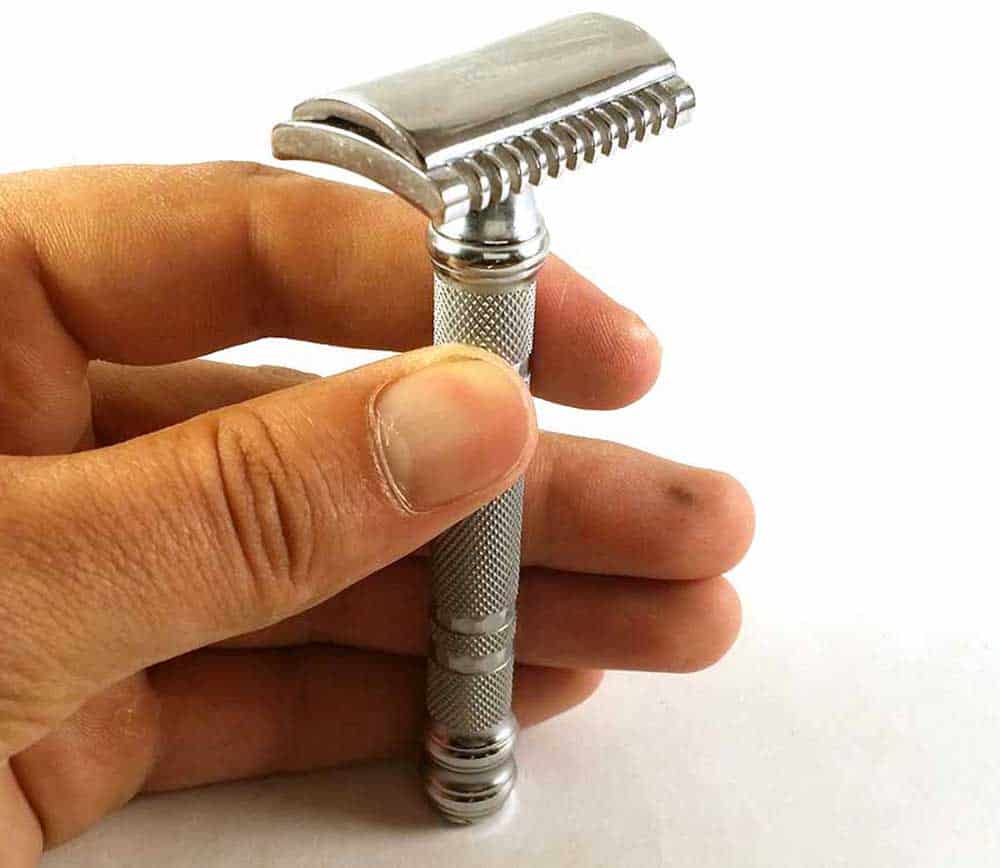
Adjustable design
Adjustable safety razors are special because they can change the level of aggressiveness used to shave.
A good example is the Merkur Futur safety razor.
There is a mechanism within the safety razor that can increase or decrease the space between the safety bar and the razor.
This increases and decreases how aggressive the safety razor is because it changes how much force is applied to the blade rather than the safety bar.
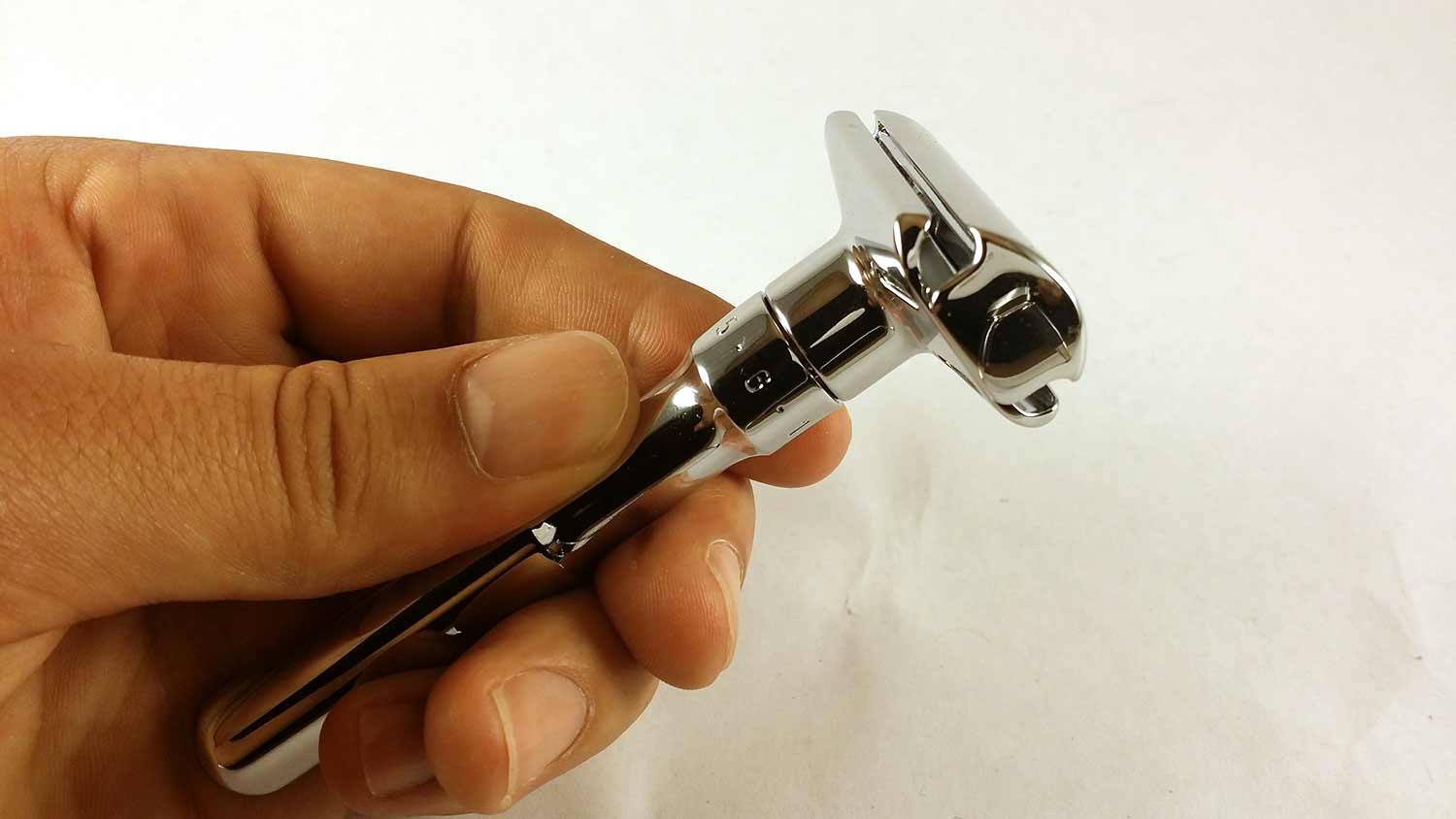
Conclusion On The Types Of Safety Razors
As you can see, there are multiple different types of safety razors that are available to you as you wind through the wonderful world of wet shaving.
One-piece designs are great for easy blade replacement but experience more wear and tear and are more difficult to clean.
Two-piece designs will last a long time as long as you take good care of them.
Three-piece designs will definitely last the longest but are the most difficult to replace the blades.
The type of headpiece you get really depends on how experienced you are at wet shaving and how thick your beard is.
If you are just starting out I would recommend going with a simple straight bar design that produces a mild shave.
Adjustable safety razors are always a treat because you can figure out how aggressive you need the headpiece to produce the perfect shave.
I hope you liked my article on the types of safety razors.
Also, check out our infographic on straight razors vs safety razors as well as the list of our top straight razors.
Be sure to check out my article Best Safety Razors to find out which safety razor is best for you on any budget.
Leave me a comment down below if you have any other questions!
Hey! Don’t Leave Yet!
If you found this article on types of safety razors helpful please be so kind as to share it on Facebook or other social media per the buttons below.
We really would appreciate it as we have worked so hard on this post for you. I have a feeling some of your friends and family will find it helpful as well.
Also, be sure to join the Prim&Prep community!
Not only will you have a chance to WIN your choice of a quality safety razor or beard oil but we will provide you with all kinds of helpful and enlightening male grooming tips and advice directly to your inbox so you don’t have to waste your time fiddling on the web to find the right information to look and feel your best.
There is nothing to lose and so much to gain.
SIMPLY SUBSCRIBE BELOW!

As a beginning wet shaver, this article was very helpful. It answered all of my questions. Thank you!!!
so glad you found it helpful!
Having wet shaved for ten or more years ,I have just gone on to DE razors and three pass etc etc. I cannot believe how little l knew ! Finding each morning really enjoyable now , thanks to all you guys. PS how do l tell the wife l really need four brushes and razors. 😀
So glad you have seen the light Paul! I still remember my “Ah Ha” moment as well when I shaved for the first time with a safety razor.
I was researching a three piece gold plated or brass Gillette razor that I found in a box of my late step Grand-dad’s belongings. Glad to say I learned more than I was seeking. Thanks
Ed.
Hahaha, glad to hear it Ed. Better too much and too little I guess. Hope you found it helpful. That’s great that you found a vintage Gillette razor. Enjoy!
I haven’t seen this addressed. How does one safely dispose of blades? They may not be sharp enough for a close shave but they could sure hurt an unsuspecting recycling worker
I’m learning a lot. Thanks
Hey Ted,
Great question. I actually have a special case that I store the old blades. When it is full, I just put all the blades in some form of bottle or tin, whether that be an old preserves bottle, medicine bottle, etc. Then throw them in the trash, not the recycling!
Thank you for your advice. I am a woman who wants to switch to traditional razors for environmental reasons. I am still confused – which razor brands/ models would you recommend to someone who is new to this and just wants something simple that works? I assume butterfly straight design, but which brands/ models? Thank you.
Hi Lola, It’s awesome to hear you want to switch to using a safety razor for environmental purposes. You will enjoy the many other benefits as well!
Our Guide on the Best Safety Razors really breaks it down on which safety razor is right for each person based on their needs and budget.
Let me know how it goes!
A big help, thank you!
Really in depth details of each type of safety razor with pros and cons, very helpful to select the one.
Hey! Like the info since getting ready to switch from caertride back to DE (after gtoo many years). But, duh – where is the “subscribe” icon you say is “below”? Cannot see it and wan to to do that.